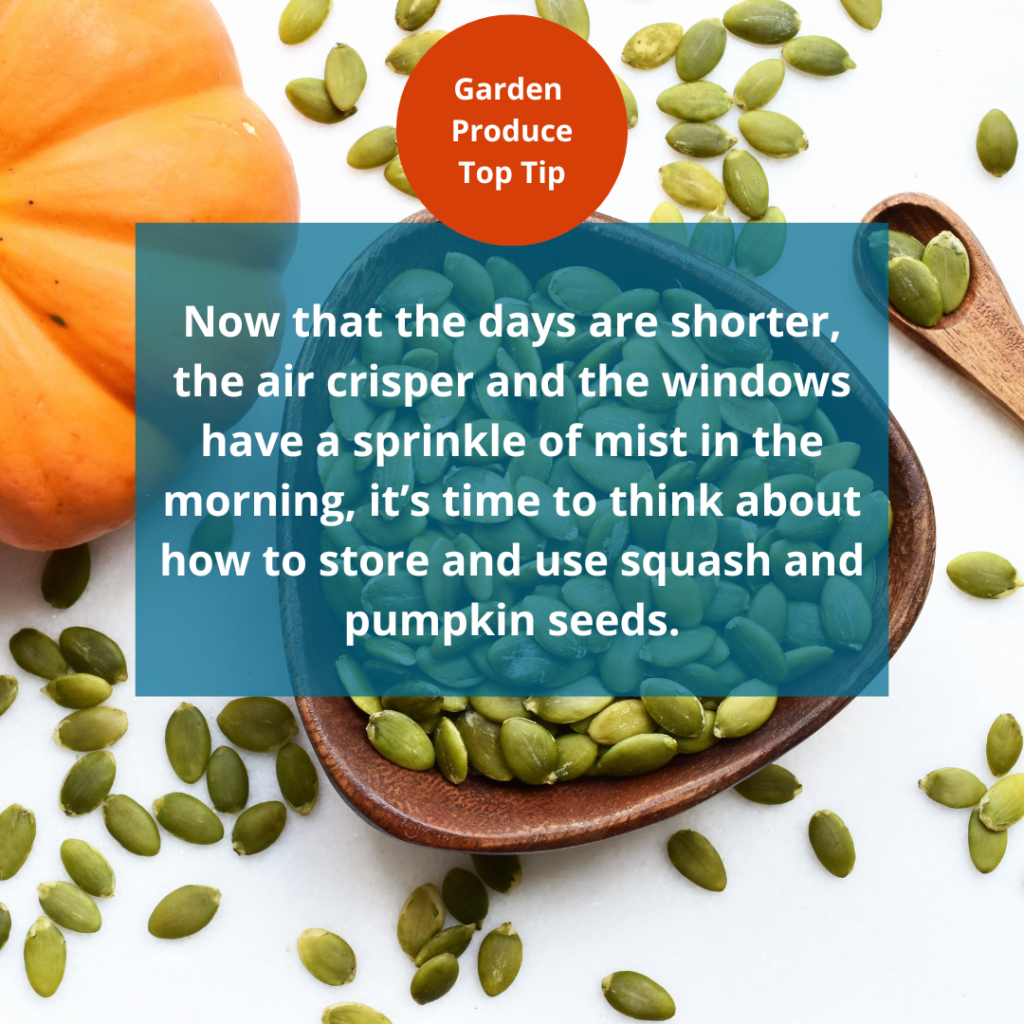by H. Chris Smith, Master Gardener volunteer

Pumpkins are a member of the Cucurbita, or gourd, family that includes other types of squash. “Pumpkins are considered to be drier, coarser, and strong-flavored compared to squash and are therefore used differently in cooking.” (see Reference #1)
In addition to the great taste of roasted pumpkin seeds, there are many health benefits to entice you to bring pumpkin seeds into your kitchen. “Pumpkin seeds are one of the best natural sources of magnesium, a mineral that’s important for keeping blood pressure in check. They’re also a good source of several other minerals, unsaturated fats, and fiber.” (see Reference #2)
Along with being high in nutrients, they’re also rich in antioxidants which aid in reducing a lot of harmful diseases our body tries to defend against. . . .” (see Reference #3)
This is one of the ways to prepare raw pumpkin seeds
- Clean and wash the seeds
- Dry the seeds in the oven at 150 degrees F. for 1-2 hours, stirring frequently
- Roast seeds by:
- Mixing thoroughly 2 cups dry seeds, ½ teaspoon Worcestershire sauce, 1½ tablespoons melted butter, and 1 teaspoon salt
- Place in a shallow baking pan and roast (1 hour at 250 degrees F.; 30 minutes at 275 degrees F.; or 10-15 minutes at 300 degrees F.
- Stir the seeds frequently as they roast
- Store cooled seeds in a plastic bag. Seeds can be kept in the refrigerator or freezer.
- Seeds will become rancid if stored at room temperature for long periods of time. (see Reference #4)
There are many simple ways to add pumpkin seeds to your diet
- Use them as toppings on dishes such as yogurt and granola;
- Sprinkle them in a salad; or
- Add them to your pumpkin bread recipe.
- “You may also buy pumpkin seed extracts which can be especially helpful if you are someone who isn’t a fan of seeds or nuts (or if you are allergic).” (see Reference #3)
Saving seeds
If you decide to collect squash and pumpkin seeds to plant in your garden in the spring, keep in mind that, “[s]eeds from hybrid varieties produce a mixture of plant types, most of which are inferior to the parent. Many varieties could be hybrids but may not be designated as such.” (see Reference #5)
Squash and pumpkin seeds can be inadvertently cross-pollinated in the garden, thereby creating plants with hybrid seeds. But, by taking the time to control pollination you can have confidence that the seeds you store will not be hybrid. “You can control pollination in your garden, but it requires careful attention. First, you need to distinguish between male and female flowers. Male blossoms are on a longer stalk and do not have a miniature fruit at the base as do female blossoms.
- With careful observation, note the blossoms that will open the following day. They have a light yellow color and a distinctly pointed tip.
- In the evening, select male and female flowers on the same plant. With a paper clip for small flowers or a rubber band for larger flowers, prevent the flower from opening. Flowers open only early in the day.
- In the morning, pluck the male blossom and touch the cluster of pollen (called anthers) to the center of the female flower (called the stigma).
- Close the female flower again so bees can’t get in.
- Tag the blossom.
- Grow the fruit to maturity for the desired seed.” (see Reference #5)
Since pumpkin and squash seeds can live up to 4-5 years, it can be worth the time to manage pollination and then carefully store the seeds from your garden. A recommended storage method is to, “[p]lace seed packets in a jar, seal the jar tightly and place it in a refrigerator or freezer. To help absorb moisture, place a small, cloth bag filled with dry, powdered milk beneath the seed packets in the bottom of the jar. Use about 1⁄2 cup of dry milk from a recently opened package. (see Reference #5)
Planting a new crop
Next spring you will need to test your stored seeds for germination before planting. This is one method:
- “Moisten two or three layers of paper towels.
- Place 25 to 50 seeds on the towels and roll the towels loosely. Place them in a plastic bag.
- Keep the towels in a warm place such as on a kitchen counter or on top of a water heater. . . .
- Observe the seeds at 2-day intervals to determine the degree of germination.” (see Reference #5)
For more information, you can read this publication, Propagating Plants from Seeds (see Reference #6).
Most of all, enjoy your fall seeds, savor their flavor, and the good memories of tending squash and pumpkin plants in your garden.
References

